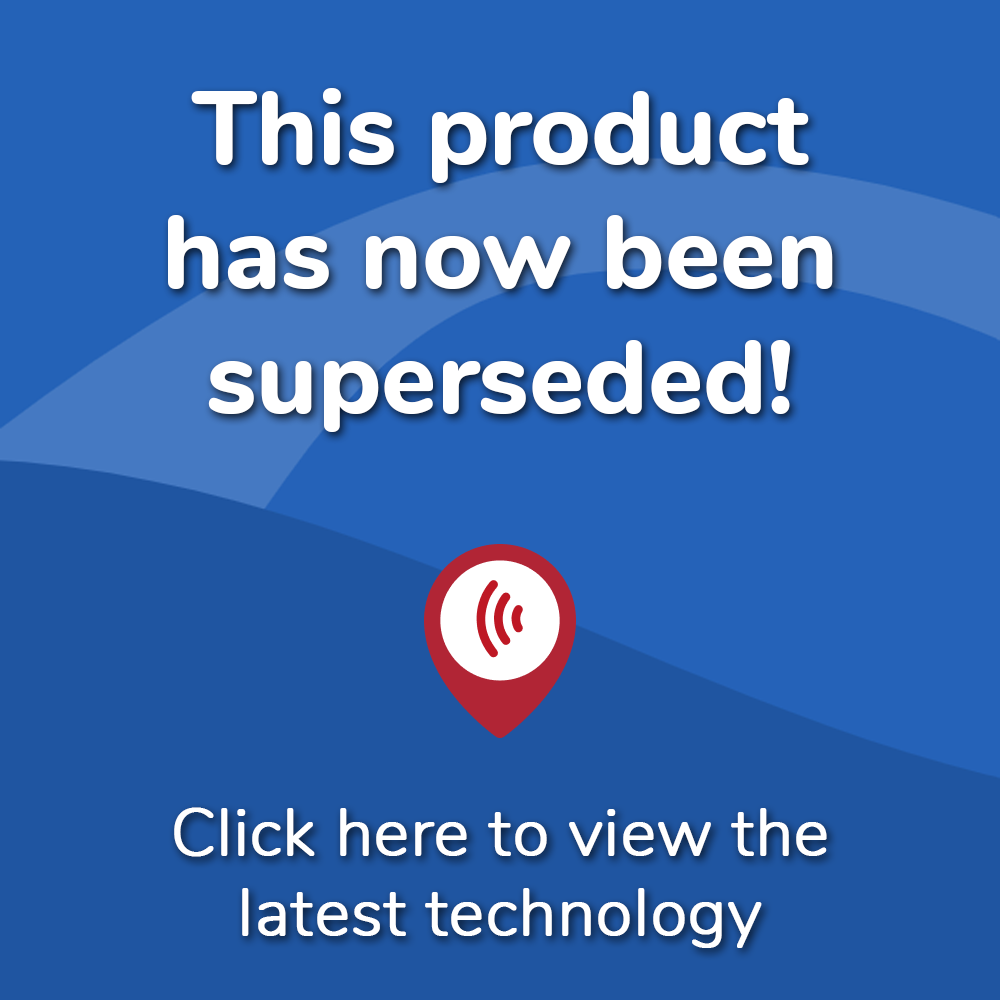WARNING DISCONTINUED Newer Starkey Models Available

What's included in our hearing aid prices?
Details & Features
Starkey Livio Edge i2400 AI / Livio Hearing Aids
January 2024 Update: The whole of the Starkey Livio range is now discontinued and therefore old technology. Do not buy old technology, view the latest technology here
September 2020 Update: New rechargeable BTE model available, as well as new features and apps. More information below.
July 2020 Update: The Livio 2400 AI model is now available in the Edge model.
An introduction to Starkey Livio Edge 2400 AI hearing aids
The Starkey Livio Edge 2400 AI is the more technically advanced model of its predecessor the Livio 2400 AI – which was the world’s first ‘healthable’ hearing aid highlighting how hearing health affects overall brain and body health. This range also includes the only rechargeable custom made hearing aid - the ITE/ITC. The Starkey Livio Edge 2400 is the top specification of this range.
The combination of artificial intelligence and 3D integrated sensors created for the Edge - tracks your own unique activity throughout your day. Measuring your steps, heart rate, preferred settings, and notifications to a friend or member of your family if you fall.
The Starkey Livio Edge 2400 AI offers premium performance and a great selection of features and programs that are ideal for those with a busy and active lifestyle. It can deliver a high quality of sound with its additional processing channels in any environment. So, if you are in noisy soundscapes like a concert or football match – you can still enjoy the clear and crisp sound.
The Starkey Livio Edge AI 2400 hearing aids in Brief
- Hear clear speech comfortably - even in busy atmospheres, as unwanted noise gets suppressed.
- Premium sound clarity with a more natural hearing experience and seamless transitions.
- Easy streaming with clear phone calls and experience music how it was meant to be heard.
- Connect via Bluetooth with all your favourite accessories and devices effortlessly.
Hearing Performance of the Starkey Livio Edge AI 2400 hearing aids
Quality of sound: Innovative technology is combined to offer an excellent soundscape in all environments.
Rechargeable: Providing up to 24-hour wear on a full charge and introducing the world's first rechargeable custom-made hearing aid - the ITE/ITC.
Streaming: Advanced streaming performance enables more enjoyment from music and your favourite tv programs.
Phone calls: Answer all your calls at the touch of your fingertips and stream directly to your hearing aids.
Geo-tagging: Tag your mot common environments like home or coffee shop - so the atmosphere transition is automatic and gives you the best sound wherever you are.
Remote Control: Switch your geo-tags and volume settings via your Thrive app.
Auto On/Off: Save battery power by automatically switching off your devices when they are not in use.
Edge Mode: Uses AI findings and recordings of your environment to make smart decisions about device adjustments. All you have to do is tap your hearing aids with your finger to make these changes - as simple as that!
Table Microphone Disc: This new addition to their Starkey accessories is ideal for group settings like conferences and family gatherings and even busy restaurants. Just place the disc in the centre of the table and it will use its 8 microphones to focus on the main voice in the conversation and then stream it directly to your hearing aids.
Healthable Technology of the Starkey Livio Edge AI 2400 hearing aids
Body Tracking: Record your daily steps, movement and physical activity.
Brain Tracking: View the benefits to your brain-health by tracking active listening.
Fall Detection Alerts: If you fall a message will be sent to inform a friend or family member, so they can seek help if needed.
Intelligent Assistance of the Starkey Livio Edge AI 2400 hearing aids
Thrive Assistant: This feature will answer questions about volume adjustment and what the weather will be like on a specific day.
Translate: Allow for better communication with people who speak a different language with the Thrive's translation tool.
Transcribe: Save or share conversations.
Self Check: A quick and easy way to analyse your hearing aid device's performance.
Tap Control: Start or stop audio streaming by touching your ear twice.
Hearing Care Wherever You Are: Receive instant request adjustments from your audiologist with your smartphone.
Find My Hearing Aids: Locate your misplaced devices easily.
Reminders: Set up helpful reminders for your own personal schedule.
What is the Starkey Livio Edge AI 2400 available in?
The Starkey Livio Edge AI model is available in BTE, RIC, ITE and ITC. The RIC, ITE, ITC and now BTE models have a rechargeable option.
Starkey Livio Edge AI September 2020 Updates
- COVID: Starkey’s feedback was during the current pandemic, consumers preferred the new ITE Edge custom hearing aid, as it didn’t snag on the mask’s straps like the RICS. They also researched all kinds of masks and how they affected the sounds we hear – like speech and visual cues. They have now developed their AI technology to automatically optimise speech audibility for social distancing, face masks and background noise.
- New Product: Rechargeable BTE Livio family addition, which competes the line they currently have. 2.4GHz, 70 dB gain and 30% smaller than other industry BTES. It also works with their existing pocket charger.
- Apps:
- Introducing Thrive Ultimate Control App: An easier to use app for total hearing aid control.
- Intellivoice: A breakthrough technology that is inspired by the brain. It uses a ‘deep neural network’ to enhance speech understanding for severe to profound hearing loss.
- REM Target Match: A feature that gives the best fitting experience with automatic REMs.
- Multiflex Tinnitus Pro: An improved comprehensive solution to manage tinnitus symptoms.
- Hearing Care Anywhere: Giving consumers live remote adjustments, real-time programming with live video – to better diagnose simple problems either device or clinical.
- Where’s my phone: A double-tap of your hearing aids and saying ‘where’s my phone’ will send a signal to your phone to ring so you can find it. Also an industry first!
**Please note, there will be an additional surcharge of £125 if we are pairing a single hearing aid with an existing aid bought from another company where we are taking over the aftercare responsibilities and looking after both hearing aids**
Paul Harrison is an audiology expert at Hearing Aid UK, with over 20 years of audiology experience and a member of the British Society of Hearing Aid Audiologists Council (BSHAA) between 2015 - 2020.
Watch the Starkey Livio Edge AI Video Below
Starkey Livio Edge AI Hearing Aids Information
Our specialist service includes:
Do not spend hundreds of pounds without getting a second opinion from us.
Please call us on 0800 567 7621
 Not only are the prices great, but the service is fantastic! Many thanks to your team.
Not only are the prices great, but the service is fantastic! Many thanks to your team.What's included in our hearing aid prices?
If you are looking at this page then it is likely that an audiologist has suggested that you purchase this particular hearing aid, so is this the best model for you?
In general, any audiologist will always be recommending to you the model that best suits your needs. Here is a useful checklist to make sure that is the case.
- Audiologist level of knowledge: The audiologist you have seen will hopefully have a wide knowledge of all available hearing aids, however, some will only be familiar with a small number of brands and therefore may not really be in a position to know which model is the best for you. It is OK to challenge their recommendation and ask them to justify why this particular brand is the one for you.
- Do research: Read about the hearing aid that was recommended. Does it seem like it will suit your lifestyle? Does it have more or less features than you need?
- Be aware of sales targets: Many high street retailers have specific tie-ins to a particular manufacturer/brand. The hearing aid they have suggested may still be the correct one for you, but do your research so that you know why they might have recommended it.
If in doubt, feel free to give us a call. That's what we're here for. In the meantime, read all about our review of the best hearing aids here
If you have significant hearing loss in both ears, you should be wearing two hearing aids. Here are the audiological reasons why:
Localisation: The brain decodes information from both ears and compares and contrasts them. By analysing the minuscule time delays as well as the difference in the loudness of each sound reaching the ears, the person is able to accurately locate a sound source. Simply put, if you have better hearing on one side than the other, you can't accurately tell what direction sounds are coming from.
Less amplification is required: A phenomenon known as “binaural summation” means that the hearing aids can be set at a lower and more natural volume setting than if you wore only one hearing aid.
Head shadow effect: High frequencies, the part of your hearing that gives clarity and meaning to speech sounds, cannot bend around your head. Only low frequencies can. Therefore if someone is talking on your unaided side you are likely to hear that they are speaking, but be unable to tell what they have said.
Noise reduction: The brain has its own built-in noise reduction which is only really effective when it is receiving information from both ears. If only one ear is aided, even with the best hearing aid in the world, it will be difficult for you to hear in background noise as your brain is trying to retain all of the sounds (including background noise) rather than filtering it out.
Sound quality: We are designed to hear in stereo. Only hearing from one side sounds a lot less natural to us.
Fancy some further reading on this topic? You can read about why two hearing aids are better than one in our article, hearing aids for both ears, here
For most people, the main benefit of a rechargeable hearing aid is simple convenience. We are used to plugging in our phones and other devices overnight for them to charge up. Here are some other pros and cons:
For anybody with poor dexterity or issues with their fingers, having a rechargeable aid makes a huge difference as normal hearing aid batteries are quite small and some people find them fiddly to change.
One downside is that if you forget to charge your hearing aid, then it is a problem that can't be instantly fixed. For most a 30-minute charge will get you at least two or three hours of hearing, but if you are the type of person who is likely to forget to plug them in regularly then you're probably better off with standard batteries.
Rechargeable aids are also a little bit bigger and are only available in Behind the Ear models.
Finally, just like with a mobile phone, the amount of charge you get on day one is not going to be the same as you get a few years down the line. Be sure to ask what the policy is with the manufacturer warranty when it comes to replacing the battery.
Looking for more information on rechargeable hearing aids? Read our dedicated page on the topic here
For most people, the answer is yes. But it's never that simple.
The majority of hearing problems affect the high frequencies a lot more than the low ones. Therefore open fitting hearing aids sound a lot more natural and ones that block your ears up can make your own voice sound like you are talking with your head in a bucket. Therefore in-ear aids tend to be less natural.
However the true answer is we can't tell until we have had a look in your ears to assess the size of your ear canal, and until we have tested your hearing to see which frequencies are being affected.
People with wider ear canals tend to have more flexibility, also there are open fitting modular CIC hearing aids now that do not block your ears.
There is also the age old rule to consider, that a hearing aid will not help you if it's sat in the drawer gathering dust. If the only hearing aid you would be happy wearing is one that people can't see, then that's what you should get.
Most people can adapt to any type of hearing aid, as long as they know what to expect. Have an honest conversation with your audiologist as to what your needs are.
Generally speaking, six or more. Unless it's none at all.
The number of channels a hearing aid has is often a simplistic way an audiologist will use to explain why one hearing aid is better than another, but channels are complex and it is really not that straightforward. Here are some reasons why:
Hearing aids amplify sounds of different frequencies by different amounts. Most people have lost more high frequencies than low and therefore need more amplification in the high frequencies. The range of sounds you hear are split into frequency bands or channels and the hearing aids are set to provide the right amount of hearing at each frequency level.
Less than six channels and this cannot be done with much accuracy, so six is the magic number. However, a six channel aid is typically very basic with few other features and is suitable only for hearing a single speaker in a quiet room. The number of channels is not what you should be looking at, it's more the rest of the technology that comes with them.
As a final note, different manufacturers have different approaches. One method is not necessarily better than any other. For example, some manufacturers have as many as 64 channels in their top aids. Most tend to have between 17 and 20. One manufacturer has no channels at all.
Hearing aids are easily lost, misplaced or damaged and typically are one of the most expensive personal possessions an individual can own. We offer hearing aid warranty coverage for £80 per year per aid. Find out more about this service we provide here
All our audiologists use the very latest technology and provide the full range of tests to accurately measure your hearing for free. Find out about what hearing healthcare services we offer all our customers here
Hearing Aid UK offers all their customers free home visiting services, even in a care home environment, for no extra cost. Including hearing tests, fittings, maintenance, check-ups and much more in the comfort of your own home and at your convenience. Find out more information about our home visits here
Here, at Hearing Aid UK, we are dedicated to offering low hearing aid prices. We achieve this by having no head office and low marketing costs. Our hearing aid prices are amongst the lowest you will find anywhere in the world. Explore our prices, brands, and models here
Other Models
Ask the Experts
6 Morton Lane
Walkwood
Redditch
Worcestershire
B97 5QA
Latest Launch
When we refer to a product as 'Latest Launch', we mean it is the latest to be released on the market.
New
When we refer to a product as 'New', we mean that the product is the newest hearing aid model on the market.
When we refer to a product as 'Superseded', we mean that there is a newer range available which replaces and improves on this product.
Older Model
When we refer to a product as an 'Older Model', we mean that it is has been superseded by at least two more recent hearing aid ranges.



